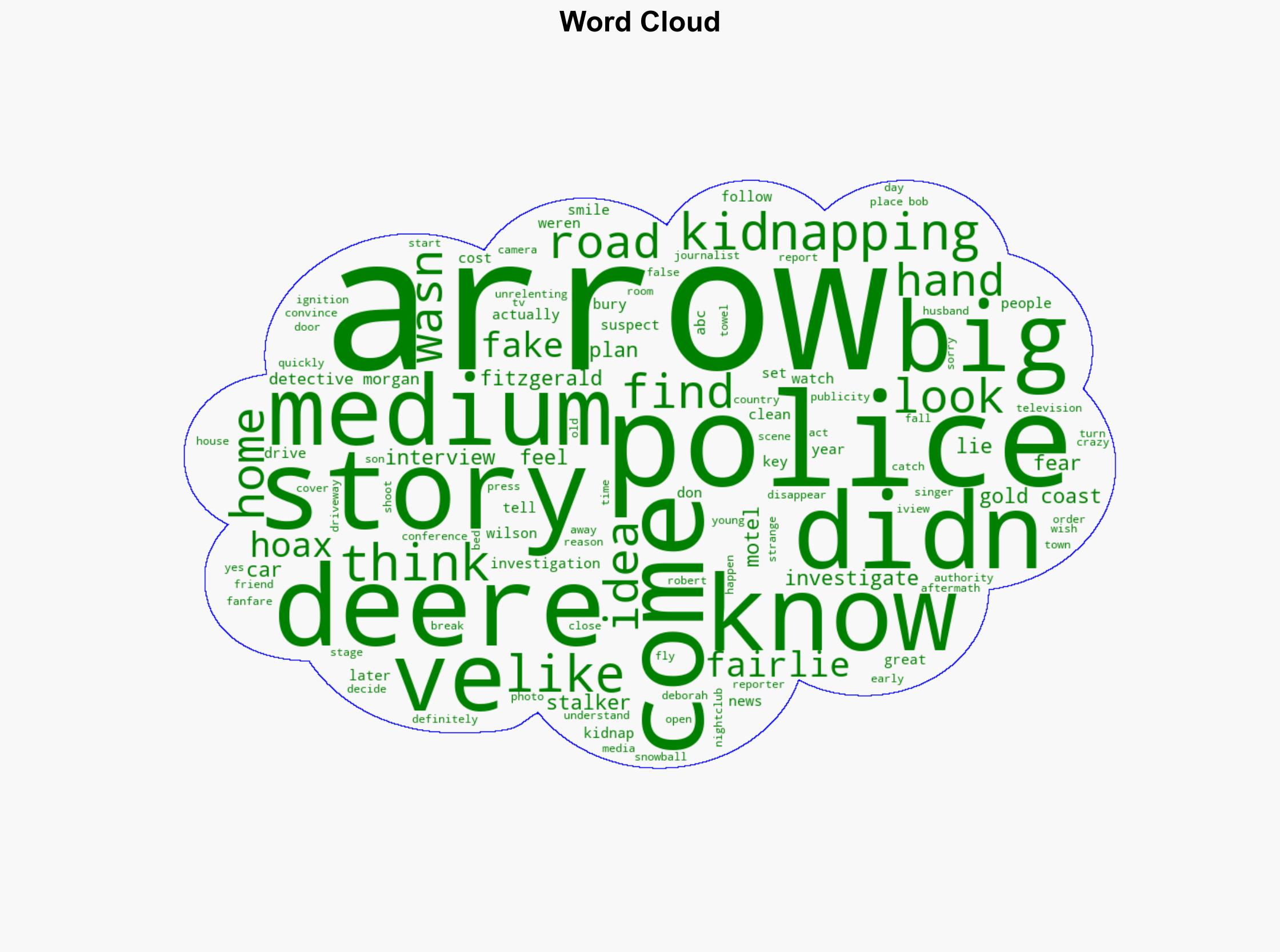‘I wasn’t sorry I did it’ Why Fairlie Arrow faked her own kidnapping – ABC News (AU)
Published on: 2025-11-08
Intelligence Report: ‘I wasn’t sorry I did it’ Why Fairlie Arrow faked her own kidnapping – ABC News (AU)
1. BLUF (Bottom Line Up Front)
The most supported hypothesis is that Fairlie Arrow staged her own kidnapping primarily to gain attention and compel authorities to address her concerns about a stalker. Confidence in this assessment is moderate due to the lack of corroborating evidence about the stalker’s existence. It is recommended that authorities reassess their protocols for handling potential hoaxes and consider psychological support for individuals involved in similar incidents.
2. Competing Hypotheses
1. **Hypothesis A**: Fairlie Arrow faked her kidnapping to draw attention to her fears of a stalker and to prompt a more serious response from authorities.
2. **Hypothesis B**: The kidnapping was a publicity stunt orchestrated by Arrow to boost her career and media presence.
Using the Analysis of Competing Hypotheses (ACH) 2.0, Hypothesis A is better supported by the evidence, particularly Arrow’s own statements and the involvement of her close associate, Robert Deering, in planning the event. Hypothesis B is less supported as there is no direct evidence indicating a career motivation, and the negative media attention could have adverse effects.
3. Key Assumptions and Red Flags
– **Assumptions**: It is assumed that Arrow’s fear of a stalker was genuine and not fabricated as part of the hoax.
– **Red Flags**: The lack of evidence supporting the existence of a stalker raises questions about the authenticity of Arrow’s claims.
– **Inconsistencies**: Arrow’s demeanor during the press conference and her admission of not knowing how to act as a kidnapping victim suggest possible deception.
4. Implications and Strategic Risks
– **Psychological Impact**: This incident may undermine public trust in genuine abduction cases, potentially leading to skepticism and delayed responses in future incidents.
– **Media Sensationalism**: The media’s role in amplifying the story highlights the risk of sensationalism overshadowing factual reporting.
– **Law Enforcement Resource Allocation**: Significant resources were allocated to this case, which could have been diverted from other critical investigations.
5. Recommendations and Outlook
- Develop clear guidelines for media engagement in potential hoax situations to prevent sensationalism.
- Implement training for law enforcement to better assess and respond to potential hoaxes.
- Scenario Projections:
- Best Case: Improved protocols prevent future hoaxes and ensure swift, accurate responses to genuine threats.
- Worst Case: Continued hoaxes lead to public distrust and resource misallocation.
- Most Likely: Incremental improvements in handling similar cases, with occasional setbacks due to media pressure.
6. Key Individuals and Entities
– Fairlie Arrow
– Robert Deering
– Brad Morgan
– Martin Fielder
– Nick Wilson
7. Thematic Tags
media influence, public safety, law enforcement protocols, psychological impact





